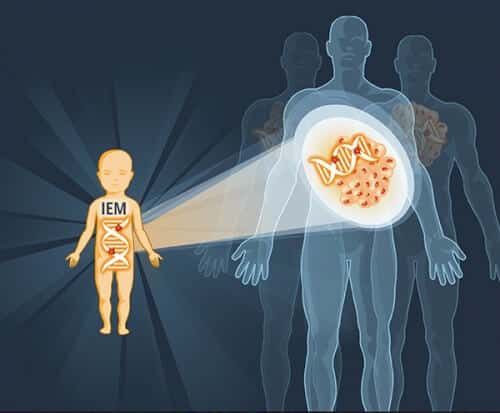Dr. Ayelet Erez from the Department of Biological Control at the Weizmann Institute: "If we find, precisely, what is wrong with the sick child, we can do a 'zoom-in', bring the lens closer to focus only on the disrupted gene, and understand its unique function, separately from the many other related changes to cancer"

Many rare childhood diseases are caused by a mutation in a single gene, but when the same gene is also involved in cancer, its role may be ambiguous, since the cancer diseases involve quite a few mutations. "A disease caused by a mutation in a single gene," says Dr. Ayelet Erez from the Department of Biological Control at the Weizmann Institute of Science, "can be used by us as a kind of 'camera lens.' If we find, precisely, what is wrong with the sick child, we can do a 'zoom-in', bring the lens closer to focus only on the disrupted gene, and understand its unique role, apart from the many other changes associated with cancer."
Dr. Erez, a genetic doctor involved in the research, examined children who had citrullinemia, a disease resulting from a defect in the uric acid cycle in the liver. In these children, the ASS1 protein, which is part of a metabolic cycle that helps the body process nitrogen, is inactive, and because of this, a toxic accumulation of ammonia is created in the body - something that can cause death.
Despite the great importance of the ASS1 gene for a healthy life, in many types of cancer, the cancer cells prevent its expression. Why do they do this? This is exactly the question asked by Dr. Erez and the members of her research group, led by research student Shiran Rabinowitz. They wanted to know if the cancer cell silences ASS1 not because of what the protein it codes for creates, but because of the substance it uses. The scientists examined data from citrullinemia patients, and mapped the metabolic pathway of ASS1. This is how they noticed that ASS1 uses an amino acid called aspartate, which is also necessary for the production of DNA and RNA. Indeed, in citrullinemia patients in whom ASS1 activity is reduced, increased levels of certain building blocks of DNA, for which aspartate is necessary, were found.
This finding shed light on the mystery: cancer cells need to produce large amounts of genetic material in order to continue dividing, so the silencing of ASS1 can be a way to eliminate the "competition" for this amino acid, thus releasing the aspartate necessary for cancer cell division and proliferation. In addition, the scientists learned that blocking the arrival of aspartate to the place where it is used to assemble the nucleic acids, leads to the inhibition of cancer. These findings were published in the scientific journal Nature.
The members of Dr. Erez's group who participated in the study: Dr. Little Adler, Dr. Alona Serber, Dr. Alon Zilberman and Shani Agron; Dr. Keren Yitzhak and Prof. Eitan Rupin from Tel Aviv University also participated; Dr. Chin Son and Dr. Sandesh Nagmani from Baylor School of Medicine in Houston, Texas; Dr. Igor Olitsky from the Department of Biological Control, and Dr. Shalu Itzkovits from the Department of Molecular Biology of the Cell at the Weizmann Institute of Science.

2 תגובות
I have a 25-year-old son who is sick with citrullinemia. When will he find a gene therapy for this disease?
Well done